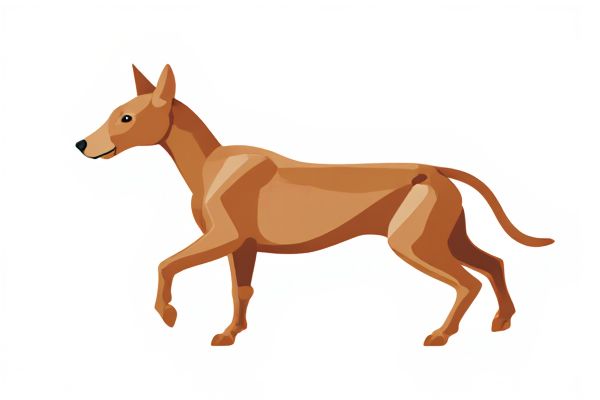
Explore endless creativity with our online random animal generator, designed to spark imagination by combining unique and unexpected body parts. Instantly create fascinating creatures by mixing features from various animals, making every result surprising and original. This tool is perfect for artists, writers, and enthusiasts seeking fresh inspiration for their projects.
Online tool for random animal generator body parts
Our random animal generator provides a variety of body part samples that are ready for immediate use and randomization. Users can also input their own lists to customize the results. With a single click, the generator produces a randomized list and selects one value for easy application.Data Source
Single Result
Multiple Results
Introduction to Random Animal Generator Body Parts
Random animal generator body parts create unique combinations by mixing features such as wings, tails, horns, and limbs from various species. These generators utilize extensive anatomical databases and algorithms to produce diverse, imaginative creatures for gaming, education, and creative design. Results highlight evolutionary adaptations, blending biomechanical traits that challenge conventional taxonomy and inspire artistic innovation.
The Role of Algorithms in Animal Body Part Generation
Algorithms play a crucial role in random animal body part generation by utilizing procedural techniques and machine learning models to create diverse and biologically plausible features. These algorithms analyze vast datasets of anatomical structures to generate unique combinations while maintaining functional coherence. Advances in neural networks enable more accurate predictions and synthesis of evolutionary consistent body parts, enhancing the realism and variability in virtual animal design.
Popular Applications for Randomized Animal Features
Random animal generator body parts are widely used in popular applications such as educational games, creative storytelling tools, and biology simulations. These features enable users to combine different animal traits, enhancing creativity and learning by exploring unique hybrid creatures. Mobile apps and online platforms leverage randomization algorithms to provide engaging, unpredictable results that captivate users and support interactive content creation.
Key Body Parts Commonly Generated
Random animal generators frequently create key body parts such as heads, limbs, tails, and eyes to form diverse and imaginative creatures. These parts often include variations of ears, noses, claws, and wings, which contribute to the unique characteristics of the generated animals. Tailoring these components allows for infinite combinations, enhancing creativity in digital art and game design.
Integrating Fantasy and Realism in Generated Body Parts
Integrating fantasy and realism in random animal generator body parts enhances creativity by merging mythical features such as dragon wings or unicorn horns with anatomically plausible elements like mammalian fur or reptilian scales. This approach ensures generated creatures maintain a sense of believability while embodying imaginative diversity, appealing to both artistic design and biological accuracy. Semantic algorithms analyze real animal morphology to produce hybrids that balance whimsical aesthetics with functional anatomy.
Visualizing Hybrid Animals Using Generators
Random animal generators create unique hybrid creatures by combining body parts from various species, enhancing creativity in visual arts and design. These tools utilize algorithms to mix features such as limbs, heads, and tails, allowing detailed visualization of imaginary animals. By integrating diverse anatomical traits, generators help explore new biodiversity concepts and inspire innovative character designs in games and media.
Customization Options in Body Part Randomization
Customization options in body part randomization allow users to tailor the variety and combinations of animal features, enhancing creative control over the generated creatures. Parameters such as limb type, size variations, color patterns, and texture details provide granular adjustments to customize each body segment. Advanced algorithms enable selective randomization, ensuring the generated animals exhibit coherent and aesthetically pleasing anatomical structures.
Educational Uses of Random Animal Generators
Random animal generators that combine diverse body parts facilitate interactive learning by offering students unique opportunities to explore evolutionary biology and anatomy. These tools enable learners to visualize how different physiological traits function and adapt, enhancing comprehension of species diversity and genetic variation. Incorporating random animal generators into educational curricula promotes creativity and critical thinking by encouraging experimentation with hypothetical animal morphologies.
Limitations and Challenges in Randomized Body Part Creation
Random animal generator body parts often face limitations related to anatomical accuracy and biomechanical feasibility, causing unnatural or non-functional combinations. Challenges arise from the inability to fully replicate complex biological traits, leading to inconsistent texture mapping and joint articulation issues. These constraints hinder the creation of convincing and ecologically plausible hybrid creatures within procedural generation systems.
Future Trends in Random Animal Part Generation
Emerging advances in artificial intelligence and machine learning enhance the complexity and creativity of random animal part generators, enabling the synthesis of highly realistic and biologically plausible body parts. Integration of 3D modeling and augmented reality technology increasingly allows users to visualize hybrid creatures in immersive environments, driving innovation in entertainment, education, and research. Future trends emphasize adaptive algorithms that incorporate genetic data for more accurate evolutionary simulations and personalized experiences in virtual ecosystems.
 azrandom.com
azrandom.com